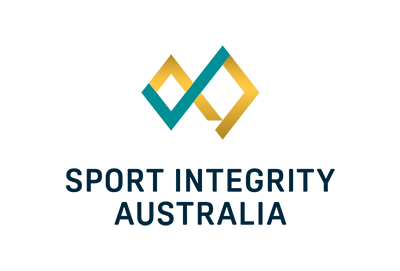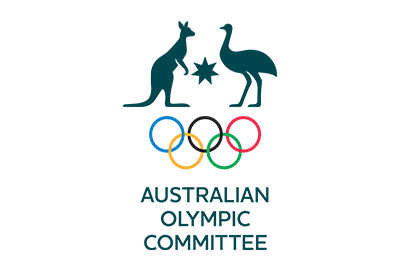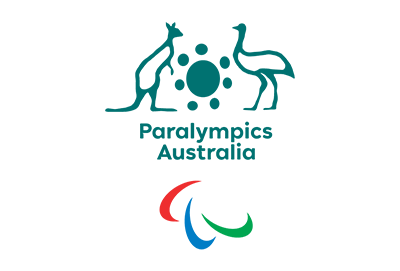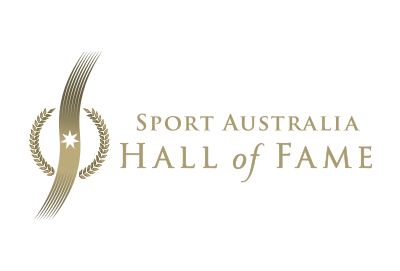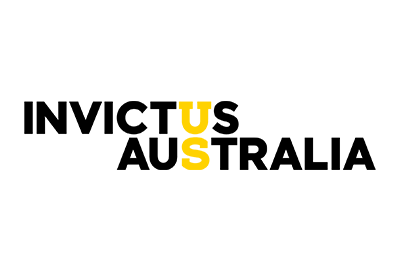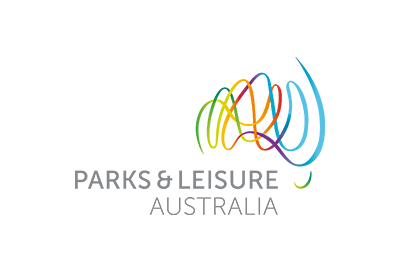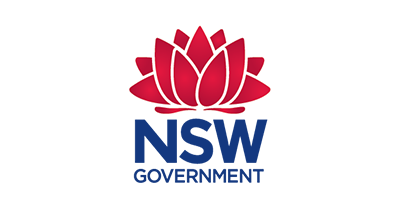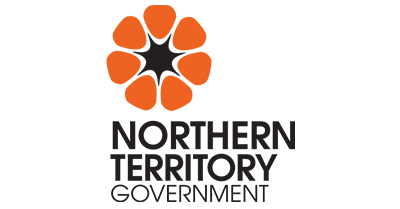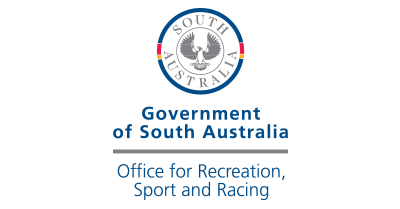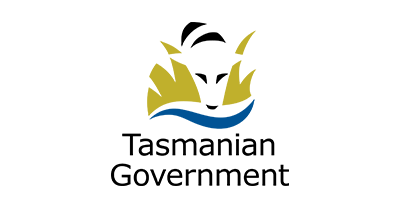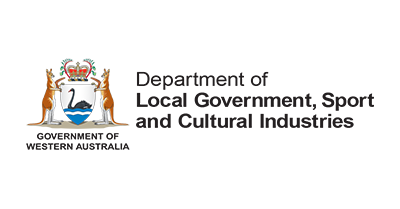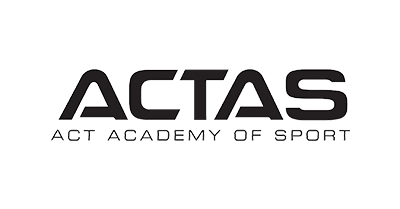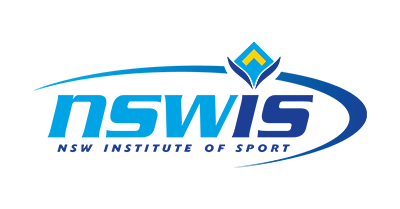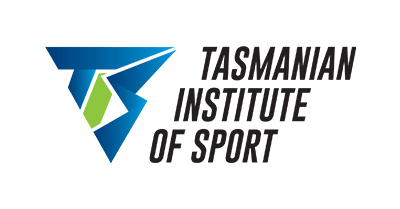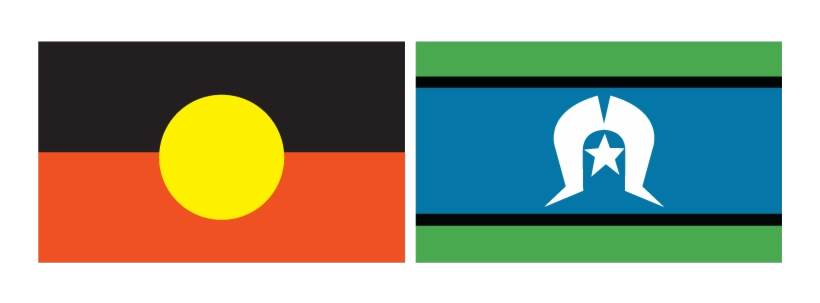Professionalisation and pay equity
Recognition of women in sports’ skill and value is growing, but challenges remain for professionalisation and pay equity.
When comparing men's and women's sport it is often difficult to determine how much athletes or teams earn or are paid. Payments for teams and competitions can include sponsorships, broadcast deals, match fees, etc. For athletes, payments can include match fees, performance bonuses, allowances, wages, retainers, commercial sponsorships, and grants or scholarships. Not all income or earnings are required to be publicly declared. 86
Some examples of Collective Bargaining Agreements (CBA) in Australian sports that provide information on payments for women athletes include rugby, cricket, Australian football, netball, basketball, and football. 87, 88, 89, 90, 91, 92
While these CBAs have improved women athletes' pay levels and conditions, most still need to maintain outside employment to cover living costs and other expenses. 17, 82, 83, 84, 85
Internationally, sports are also looking to address historical gender imbalances in payments and professionalisation.93
- FIFA, the world body for football, announced an increase in prize money for the 2023 Women’s World Cup to US$150 million, three times the amount that was awarded in 2019. Additionally, they plan to have equal payments for the 2026 Men’s and 2027 Women’s World Cups and committed to players and coaching staff having the same conditions (e.g., base camps, accommodation, flights), starting with the 2023 Women's World Cup hosted in Australia and New Zealand. 94
- After controversy in 2021 surrounding inequity of facilities, funding, and resources provided to the men’s and women’s US National Collegiate Athletic Association (NCAA) basketball championships, the NCAA commissioned two reports to investigate increasing gender equity. The recommendations indicated that combining championships “for a given sport enables more coordinated planning, increases equity in the goods and services, facilities, and resources provided at the championships and eliminates or reduces disparities between the 'look and feel' of the tournaments.” 95, 96
- In March 2021, the England and Wales Cricket Board (EBC) established the Independent Commission for Equity in Cricket (ICEC) to investigate and assess evidence of inequalities and discrimination within all forms of cricket. The final report, released in June 2023, highlighted that the lived experiences and structural barriers for women in cricket at all levels demonstrate that women continue to be treated as subordinate to men. Following the ICEC Report, the ECB committed to spending the next several months considering the recommendations and developing a new action plan with stakeholders from across the sport. 142, 143
Although there has been progress, and women’s elite and professional athletes and sports are increasingly being recognised for their skill, dedication, and entertainment value, there are still many challenges as they work towards professionalisation and pay equity with long-standing men’s competitions and events. 16, 17, 77, 78, 79, 80, 81, 140, 141, 144
“Achieving sustainable pay equality where women's sport is valued equally to men's requires buy-in and a significant shift in mindset across the entire sports ecosystem. This includes sports organisations, governments, news media, fans, broadcasters, corporate supporters, athletes, players' associations and international sports bodies.”77
Champions of Change, Pathway to Pay Equality: Elite women athletes, (2019)
Resources and reading
- Women players benefit most in Cricket Australia’s new $634m pay deal, opens in a new tab, Guardian sport/Australian Associated Press, (3 April 2023). CA and the Australian Cricketers’ Association on Monday revealed details of a new five-year memorandum of understanding that will see professional women players share $133m – an increase from $80m in the previous agreement – and benefit from a 66% increase in payments. Under the new deal, minimum and average CA women’s contracts will increase by 25%, while the number of contracts will increase from 15 to 18. Domestic players who do not play for Australia, who play both WNCL (50 over) and WBBL (T20) formats, can earn on average $151,019 annually, inclusive of match fees. This makes them on average the highest-paid female players of team sports in Australia, with its nearest competitor being Super Netball where the minimum salary is $43,000 with no additional match payments. The AFLW minimum wage sits at close to $40,000, while NRLW is $30,000 and A-League Women’s is $25,000.
- Prize money for 2023 Women's World Cup to be raised to $US150 million as part of FIFA's three-step gender equality plan, opens in a new tab, ABC News, (17 March 2023). FIFA president Gianni Infantino announced the $US150 million prize in his closing remarks to the 73rd FIFA Congress on Thursday. The figure, however, was still considerably lower than the $US440 million ($663 million) total prize money awarded at the men's World Cup in Qatar last year. "Our mission will be able to have equality in payments for 2026 men's and 2027 women's World Cups," he said. Step one, he said, would be equal conditions and services, such as accommodation and flights, for all men and women playing at a World Cup. "This will be a reality already for the Cup in 2023, same conditions as for the World Cup '22 will be for the players and coaching staff in the Women's World Cup in '23," he said.
- Rugby Australia, Super Rugby Clubs and Players finalise new CBA, opens in a new tab, Rugby Australia, (16 March 2023). The sixth CBA for Australian Rugby includes important first steps in the professionalisation of the Women’s game. The new steps for the women’s game will see an additional two million dollars invested into Women’s XVs, with a new centralised contracting structure for Buildcorp Wallaroos Players and minimum payments for all Buildcorp Super W Players. For the Wallaroos, a list of up to 35 Players will be contracted across three tiers, with the potential to earn between $30,000 and $52,000 in RA payments for Wallaroos and Super W participation combined in 2023. A parenting and pregnancy guideline has been agreed in principle – contracted Wallaroos Players will receive their full contract amount for the year while on maternity leave. All Buildcorp Super W Players will receive an RA-funded minimum payment of $4,000 in addition to club payments for the five-rounds-plus-Finals Super W season. The additional funding from RA will also cover new investment into the High-Performance programs at Super W clubs to enhance the coaching, strength and conditioning, medical and performance environments.
- Insight Rich list: Australia’s best-paid female athletes revealed, Minjee Lee, Ash Barty top the list, opens in a new tab[paywall], News Corp/Herald Sun, (2 March 2023). Australia’s top female athletes are, finally, making some real money. Which cash brackets do our top stars fall into? See the numbers here.
- What women in sport really get paid, and which sports are leading the way, opens in a new tab[paywall], Emma Greenwood, Jamie Pandaram, Daily Telegraph, (1 March 2023). There continues to be a significant gap between men’s and women’s wages in sport, but change is coming with some sports leading the way. See where women can earn a living wage.
- Insight Sport equal pay edition: We need a fix not a bandaid, opens in a new tab [op-ed], Minister for Sport Anika Wells, news.com.au, (28 February 2023). New Zealand is way ahead of Australia when it comes to a good strategy around the sustainability of women’s sport. Why is there a reluctance to take it seriously?
- How much do Australian sportswomen get paid?, opens in a new tabDanielle Warby, (18 February 2023). It’s impossible to give exact amounts of salaries for female athletes, different sports have different pay arrangements. Some athletes may have personal sponsorships or endorsements on top of these figures. Women in sport tend to be paid more at the international level than the club level, which is different to how men in sport are paid. So, this means all wages are approximate. Earnings are in Australian dollars unless I’ve said otherwise.
- AFLW players get 94% pay rise in new CBA, opens in a new tab, Ed Dixon, Sports Promedia, (20 May 2022). AFLW aiming to be full-time professional league by 2026. The Australian Football League (AFL) and its players association (AFLPA) have struck a new collective bargaining agreement (CBA) for the upcoming season, which will see average salaries for women’s players increase 94 per cent. The increased pay deal for the AFL Women’s (AFLW) competition means the average salary for all 540 players across 18 clubs will rise from AUS$23,904 (US$16,893) to AUS$46,280 (US$32,706).
- New equal-pay women's basketball league unveiled, hailed as 'game-changer', opens in a new tab, Marc Hinton, stuff.co.nz, (30 March 2022). Basketball New Zealand on Wednesday unveiled its new women’s league, which it has dubbed Tauihi Basketball Aotearoa. Tauihi is the Te Reo Māori word for “to soar”, and organisers are highly optimistic it can live up to its moniker, with salaries governed by the league and established “on a par” with their men’s equivalent.
- The Fiona Worts feel-good Maccas story highlights the unseen barriers facing A-League Women players, opens in a new tab, Samantha Lewis, ABC News, (15 February 2022). On Sunday afternoon, Adelaide United striker Fiona Worts equalled the A-League Women's all-time record for most goals scored by a single player in a match, netting five in the Reds' 8-2 thumping of Brisbane Roar. But the English-born forward, who has been crucial in much of the club's success, wasn't able to celebrate any of it. Instead, a few hours after the full-time whistle, Worts was on a plane back to Adelaide from Brisbane, preparing for her morning shift at McDonald's the next day. This is not an uncommon story among A-League Women footballers and, indeed, most women athletes around Australia.
- Women in sport are winning the fight for equal pay – slowly, opens in a new tab, Beth Clarkson, Alex Culvin, Ali Bowes, The Conversation, (30 November 2021). The Welsh national football association has pledged to introduce equal pay for their men’s and women’s teams by 2026. The news comes following a documentary featuring the most capped Welsh player Jess Fishlock, who called the lack of pay parity “unacceptable”. These recent cases are indicative of real change in how some national governing bodies view women’s sport, long considered “less than” the men’s versions and chronically underfunded. And, as these bodies are social institutions – their decisions and financial support influence how society views sport – this is good news for women’s sport more broadly. However, for many players and athletes, progress is slow and challenges remain.
- Second NCAA gender equity report shows more money spent on male athletes than female ones on average, opens in a new tab, Associated Press/ESPN, (27 October 2021). The NCAA spends more on average on male athletes than female ones, particularly when it comes to the "mere handful of championships'' viewed as revenue sources, according to a new report. The law firm hired by the NCAA to investigate equity issues released its 153-page report, opens in a new tab Tuesday night, which includes a series of recommendations to improve the gap among all sports tournaments. It's the second report from the firm, following its Aug. 3 one that recommended how to equalize men's and women's basketball tournaments.
- Gender pay gap in sports, opens in a new tab, sportanddev.org, (17 September 2021). As we celebrate International Equal Pay Day on 18 September, we take a closer look at the factors responsible for the existence of gender pay gap in sports including questions about revenue generation, differential performance, representation issues, and who is leading the way.
- PFA and APL announce ground-breaking CBA to drive Professional Leagues, opens in a new tab, PFA, (9 September 2021). Under the five-year agreement struck between Professional Footballers Australia (PFA) and the Australian Professional Leagues (APL), genuine equity in high performance standards in the A-League and W-League have been enshrined to create a “world-class workplace” for all the nation’s players. 32% increase in the W-League Salary Cap Floor over the course of the agreement, with capacity to increase through annual reviews.
- Suncorp Super Netball lands landmark pay deal, opens in a new tab, Netball Australia, (4 September 2021). In a two-year deal that benefits the athletes, the average potential maximum salary of contracted players will increase from $75,167 to $91,500. The average minimum player salary of contracted players will also rise, by 15 per cent, from $64,167 to $74,000. From the 2022 season, the minimum salary of all athletes will grow by 17 per cent, up to $43,000 from $36,667. The deal also provides further funding for training partners, with their honorarium increasing from $3,500 to $5,000 per year.
- Long-awaited NCAA gender equity review recommends combined Final Four for men's, women's basketball at same site, opens in a new tab, Associated Press/ESPN, (4 August 2021). The NCAA has fallen short of upholding its commitment to gender equity by prioritizing its cash cow Division I men's basketball tournament "over everything else," according a scathing review released Tuesday assessing how the association conducts its championship events. A law firm hired by the NCAA to investigate equity issues released a 113-page report, opens in a new tab that includes a series of recommendations, including holding the men's and women's Final Fours at the same site and offering financial incentives to schools to improve their women's basketball programs. But it ripped the NCAA for falling into an entrenched approach to the women's game, preventing its growth and leading to an embarrassing lack of equality with the men.
- Prize money: Cricket makes progress towards gender parity, biggest gap in football, opens in a new tab, Katie Falkingham, Sonia Oxley, Anna Thompson, BBC Sport, (March 2021). Since the last edition of the BBC prize money in sport study in 2017, sports including hockey, cliff diving, surfing and wrestling have achieved parity at at least one major competition. Of the 48 sports surveyed, 37 offered prize money - of which only three did not offer parity at any of its major championships or events. The biggest gaps in prize money for male and female athletes are in football, golf and basketball.
- Female cyclists discouraged by lack of recognition as men in the same race awarded prize money, opens in a new tab, Chloe Hart, ABC News, (25 February 2021). Alana Leabeater identified several cycling events where women don't get podiums or prize money. She says it is discouraging and also creates an unwelcoming environment for women. Stef Hanson says there's a huge difference when it comes to equality for female triathletes compared to cyclists.
- Basketball Australia and WNBL players agree to first ever CBA, opens in a new tab, Basketball Australia, (17 November 2020). The Women's National Basketball League (WNBL) has taken a major step towards professionalism after the players, clubs and Basketball Australia signed off on a Collective Bargaining Agreement (CBA) for the first time in the league’s 41-year history. The agreement includes:
- Standardised minimum wage rises for rostered and development players over the next three years [minimum wage will rise, opens in a new tab to $13,500 per contract period in the 2021-22 season, and $15,000 per contract period in 2022-23].
- Improved health care standards, including private health insurance and physiotherapy services when travelling;
- Embedded culture and community player education and engagement; and
- Other basic conditions including advanced scheduling, improved travel conditions, apparel, and professional services.
- California Just Made It Illegal to Pay Women Less Than Men In Sporting Events on State Lands, opens in a new tab, Dylan Heyden, The Inertia, (12 September 2019). California Governor Gavin Newsom signed into law a landmark bill that will now make it illegal for sports organisations to pay male and female competitors differently at any sporting event held on state lands. AB 467, also called the 'Equal Pay for Equal Play' measure, initially drew inspiration from the Committee for Equity in Women’s Surfing and their fight for equal pay for women big wave surfers at Maverick’s.
- England and Brazil confirm equal pay for men’s and women’s football teams, opens in a new tab, Geoff Berkely, Inside the Games, (5 September 2020). England and Brazil will pay their international women's football teams the same as the men, the two national governing bodies have said.
- Primetime professionals… still a man’s game?, opens in a new tab Chelsea Litchfield, Jacquelyn Osborne, Broad Agenda, (15 October 2019). Today on BroadAgenda, Dr Chelsea Litchfield and Dr Jaquelyn Osborne examine pay increases and media exposure in these sports and argue that there is much more that could be done in the space of women’s elite, professional sport.
- Developing Sport for Women and Girls, opens in a new tab, Emma Sherry, Katie Rowe, Routledge, (2020). Provides critical analysis of contemporary sport development, from high performance pathways to engaging diverse communities to the use of sport to empower women and girls. Chapters include: Gender, Sport and Livelihoods, High-Performance Athletes, Athlete Protection and Duty of Care, Professional Women’s Sport Leagues, and more.
- Routledge Handbook of the Business of Women's Sport, opens in a new tab, Nancy Lough, Andrea Geurin (eds.), Routledge, (2019). Featuring international perspectives, with authors from North America, South America, Europe, Asia, and Oceania, and in-depth profiles of real leaders within different sectors of women's sport in the global sport industry, this book offers an integrated understanding of the ways traditional media and social media impact both the understanding and advancement of women’s sport properties, businesses, teams, and athletes. Case studies show how societal issues such as gender, power, and framing impact the business of women’s sports and those who work in women’s sport.
- No boundaries for women and girls in sport and physical activity, opens in a new tab, Australian Women in Sport Advisory Group, (2019). Our vision is that there are no boundaries for women and girls in sport and physical activity. Our goal is to achieve this by 2025, but what does it look like, and how will we know when we have made it? Here we set out what we are striving for, actions to take and measures of success. Key members of the sport sector, governments and industry are onboard.
- FIFA Benchmarking Report Women's Football: Setting the Pace - 2024 Edition, opens in a new tab, FIFA, (March 2025). Throughout 2024, FIFA has been engaging hundreds of stakeholders from across the women’s game, with 86 leagues and 669 clubs used to comprehensively map the global landscape of women’s football. To deliver the most relevant insights, the benchmarking focuses exclusively on women’s football leagues and clubs. The analysis focuses on the performance of leagues and clubs in each tier and how each can learn from its peers and/or the tier above.
- On average, leagues that had three different winners over the past three seasons saw significantly higher broadcast revenue (USD 325k) and partners (2.8) compared to leagues with one winner (USD 251k and 1.3, respectively).
- Globally, 42% of referees per league were female, ranging from 57% in Tier 2 to 25% in Tier 3.
- In terms of support for pregnant players in leagues, it primarily came in the form of maternity leave, albeit this was much less prevalent in Tier 3 (Tier 1: 64%, Tier 2: 64%, Tier 3: 22%).
- Globally, the average gross salary for players is around USD 10,900 p.a. and for Tier 1 clubs it is around USD 24,030 p.a., however, this is significantly skewed by a small number of clubs in Tier 1, where there are 16 clubs across seven countries that paid an average gross salary of over USD 50,000 p.a. per player.
- Clubs which paid salaries of more than USD 5,000 p.a. were significantly more likely to provide non‑financial benefits, such as housing benefits or health insurance (with 95%+ of these clubs offering benefits).
- The report highlights that The A-League in Australia provides an example of how strategic expansion can contribute to league growth. In 2023-2024, the league increased the number of teams from 11 to 12 and expanded the total matches from 104 to 139. The league also experienced positive trends, including a threefold increase in its outbound transfer record fee for an ALW player. This case demonstrates that a measured approach to expansion could strengthen a league’s overall standing and player profile.
- Forging A New Path To Success For Women In Professional Team Sports: Research For Evidence-based Action, opens in a new tab, Victoria University and Griffith University, (2024). Through a series of studies, this research highlights the debates, dilemmas and potential actions for women's professional teams to be inclusive, sustainable and successful. Funded by an ARC Discovery grant, the researchers worked with various professional sport governing bodies to uncover innovative management strategies, structures and practices for women's professional sports workplaces. In practice, this meant: Empowering women athletes in professional team sports by listening to their experiences. Documenting the factors that indicate success and sustainability in women's professional team sports. Gaining insights into the management of national women's team sport leagues. Sharing their discoveries and analysis through a range of dissemination methods.
- Multiple Job-Holding in Elite Women's Football, opens in a new tab, FIFPRO, (2024). This report from FIFPRO, FIFA and Australia's Edith Cowen University details how most top-flight women players are unable to earn enough through football to fully sustain their livelihoods.
- 2023/24 Women's Player Workload Monitoring Report, opens in a new tab, FIFPRO, (2024). The growth of women’s football competitions is bringing increased recognition and professionalisation in parts of the world, but piling excessive pressure on some players, and failing to address wider issues like uneven games and underload.
- Postpartum Return to Play Guide, opens in a new tab, FIFPRO, (2024). A 48-page guide to help professional footballers, as well as their families, team staff and other football stakeholders, better understand and manage pregnancy and the phase after childbirth.
- New Maternity Protections for Professional Women’s Players, opens in a new tab, FIFPRO, (2024). This report aims to analyse the maternity protections introduced in FIFA’s Regulations on the Status and Transfers of Players (RSTP) for professional women’s players, which came into force on 1 June 2024.
- FIFPRO Asia/Oceania: Lessons from the AFC Women's Club Championship, opens in a new tab, (FIFPRO, (2024). The report from FIFPRO Asia/Oceania gathers insights from 88 players who competed in last season’s invitational tournament.
- Insights and Impact Report: Edition 2, opens in a new tab, AFL Players Association, (June 2023). This report represents annual insights derived from data collected from AFLPA members.
- 36% of AFL women's (AFLW) players believe that the AFLW program is now “completely integrated” into their club, which is more than double the percentage result from Season 6 (17%). 61% of players from the expansion clubs (clubs that more recently joined the AFLW competition) reported that the AFLW program was completely integrated, compared to 27% of players from the non-expansion clubs.
- 54% of AFLW players reported that their club CEO viewed the AFLW program with extremely high levels of respect - up from 30% in Season 6. 75% of players from expansion clubs reported extremely high respect from their CEOs compared to 46% from existing club CEOs.
- Player feedback and industry reviews shared with the AFLPA suggest that the current resources and staffing for the AFLW program do not adequately support the game’s sustainable growth.
- AFLW players provided anecdotal feedback to the AFLPA indicating that some venues and facilities provided for training and match day were below a suitable standard. Subsequently, the AFLPA conducted a review using the AFL’s Venue Guidelines. Out of 33 venues, 9 were rated between ‘very poor’ and ‘average’ for surface and/or facilities quality. Only 12 were rated between ‘good’ and ‘very good’, yet half of those 12 only hosted one match, so players rarely got to experience them. Venues are more likely to have a good quality surface than sufficient facilities.
- Along with pay disparity, the AFLPA is pushing for equalisation of other working conditions and benefits between AFL and AFLW players in the ongoing CBA negotiations.
- The AFLPA voting members gave their approval to the board equalisation effort, leading to a notable amendment to the AFLPA constitution. This marked a historic moment for the organisation as it introduced mandatory equal minimum positions for both AFL mens' (AFLM) and AFLW members on an ongoing basis. Three additional AFLW members were appointed to the board at the 2022 AGM.
- Mental health, social media, and gender/sexuality inclusivity were perceived as the most significant societal issues facing Australian footballers in 2021.
- Pathway to Gender Equality in Sport 2021–2022 Progress Report, opens in a new tab, Champions of Change - Sport, (June 2023). Despite consistent effort across the industry over several years, and an increase in the overall number of women working in the industry, we continue to see gender segregation in the areas of administrative leadership and high-performance leadership. Our key areas of focus moving forward will be addressing the disparity in the number of women in leadership (namely executive, CEO, Board and coaching roles). We continue to invest in leadership training and development opportunities for women through various programs. However, there is a need to investigate and address the systemic barriers that continue to facilitate gender segregation in sporting workplaces. Some key highlights and future priorities from 2022 for organisations in the Champions of Change Sport Group include:
- 43.8% achieved gender balance in playing opportunities across men’s and women’s competitions (up from 37.5% in 2021).
- 62.5% report gender balance in funded development pathways to reach the elite level (the same as in 2021.
- 100% have achieved gender balance in access to extended resources, e.g., doctors, physios and equipment, for elite women athletes (up from 87.5% in 2021).
- 93.8% achieved equal travel/accommodation policy across genders (up from 81.2% in 2021).
- 93.8% report pay equity/prize equity ambitions have been communicated internally and externally in the last 12 months (p from 87.5% in 2021).
- 87.5% report gender pay gap data for elite athletes have been defined, measured and published (up from 75.0% in 2021).
- 43.8% report gender balance in allocated budget dedicated to building women’s sport at the elite level (up from 25.0% in 2021).
- 12.5% have achieved pay equity (base pay and total remuneration) between men and women athletes at the elite level (up from 6.2% in 2021).
- State of Play Survey 2022-23, opens in a new tab, Change our Game, Victorian Government, (June 2023). Between October and November 2022, more than 670 Victorians answered questions on a range of topics relating to gender equality in sport, including values and behaviour in community sport, elite sport, sports media and coverage, leadership opportunities and perceptions, and experiences working and volunteering in sport. The State of Play Survey revealed that overall, while there are some positive attitudes towards women and girls in sport and their right to equal opportunities and access, change is still required in terms of underlying attitudes and behaviours. Consistently throughout the survey, men were less likely than women to perceive gender inequality in various aspects of sport. In relation to professionalisation some of the key insights were:
- Men were twice as likely as women to believe male elite athletes are more skillful than female elite athletes.
- 1 in 3 elite athletes felt women and men had equal sponsorship opportunities.
- Holding up a mirror to cricket , opens in a new tabThe Independent Commission for Equity in Cricket (ICEC), (June 2023). In November 2020, the ECB announced its intention to establish a Commission “to assist the ECB Board in assessing the evidence of inequalities and discrimination of all forms within cricket, and the actions needed to tackle these issues.” The ICEC was then established in March 2021. The problems we identify are not, sadly, unique to cricket. In many instances they are indicative of equally deeply rooted societal problems and so whilst our headline finding is necessarily blunt, we consider the fact that the ECB proactively initiated this process and opened itself up to independent scrutiny is both positive and brave. Our evidence shows that women continue to be treated as subordinate to men within, and at all levels of, cricket. This is evident both from the lived experience of professional and recreational women cricketers and from the structural barriers that women continue to face.
- It has been 278 years since the first recorded women’s cricket match, 133 years since the first group of women cricketers toured the UK, and 97 years since the foundation of the Women’s Cricket Association, yet England Women have never played a Test at Lord’s.
- The average salary for England Women is 20.6% of the average salary for England Men.
- We found 569 people who had played professional level domestic cricket in England and Wales in 2021, 161 women and 408 men. All domestic male players had professional contracts, but just 52 of the female players at the same level did (the remainder either received match by match fees or were not paid at all).
- The ECB has now funded 80 professional domestic female players which represents 100% growth in the volume of professional domestic women’s contracts funded by the ECB in three years (with contracts funded by WRTs adding to that number).
- In 2021 for every £1 the ECB spent on England women’s teams it spent £5 on the men’s teams and that in overall remuneration England men received 13 times the amount paid to England women.
- There are also “significant levels” of inequity in the availability of kit and in the number of grounds and facilities for women and girls.
- Women and women’s teams are frequently demeaned, stereotyped and treated as second-class. There is evidence of “a widespread culture of sexism and misogyny, and unacceptable behaviour towards women in both the recreational and professional game”. A "laddish drinking culture", “predatory behaviour” and “disturbing examples of the conduct and attitude of men towards women, often fuelled by alcohol”.
- Key recommendations to improve equity for women: Overhaul of women’s pay structure to ensure equal pay at domestic level by 2020 and at international level by 2030; Match fees for England men and women to be made equal immediately; As part of governance structure overhaul, women’s game should have equal representation to the men’s game including direct representation on par with first-class counties, not indirectly through the FCCs; Articles of Association amended with specific obligation to promote and develop women’s and girl’s cricket.
- The Business Case for Women’s Football, opens in a new tab, UEFA, (August 2022). Ground-breaking UEFA report outlines the incredible potential of women’s club and league game in Europe, with commercial value set to reach €686 million by 2033. A record-breaking UEFA Women's EURO 2022 showcased the popularity and potential of international women's football, but the game has also made huge strides at club level, with the successful launch of a new format for the UEFA Women's Champions League with centralised marketing and TV coverage and ever-increasing professionalisation across domestic leagues. In order to maintain this momentum, investors now have a unique opportunity to contribute towards the further development of the game. The Business Case for Women's Football provides justification for that investment to all interested stakeholders. Delivering on commitments outlined in Time for Action, UEFA’s women’s football strategy, this new report, which is based on an unprecedented range of research and data, provides comprehensive reasoning for increasing investment in women’s football and a clear methodology and explanation of its findings.
- Women in the 2020 Olympic and Paralympic Games: An Analysis of Participation, Leadership, and Media Coverage, opens in a new tab, Women's Sport Foundation, (April 2022). This study is the seventh report in the series that follows the progress of women in the Olympic and Paralympic movement. Some of the major findings documented by this study included:
- Women account for close to 49% of the overall athletes in the Olympic Games. Many larger nations brought delegations with more than 50% female athletes.
- While not equal, the Olympic programme has narrowed the gap in terms of number of medal events for female and male athletes.
- Despite the celebration of gender equality and previously intransigent nations who had refused to include female athletes in their delegations, four countries did not include women in their Olympic delegations.
- The wealth gap continues to widen: In both the Olympic and Paralympic Games, there is a distinct difference between wealthy nations and less financed nations. Wealthy nations were more likely to have athlete delegations that were gender equal.
- Disrupt Hers: Driving a new model for women's sport, opens in a new tab, Tucker Centre for Research on Girls & Women in Sport, (March 2022). For decades, scholars and advocates of women’s sport have called for a change in how women’s sport is marketed, sponsored, endorsed, promoted, covered, invested in, capitalized upon, and broadcast. Women’s sport has deserved equal resources, yet has not been provided adequate investment, which is then used as a false narrative depicting women’s sport as not as lucrative, successful, and popular as men’s sport—a classic chicken-egg circular argument. Due to a multitude of factors, unprecedented disruption is occurring in women’s sport, specifically among women athletes. Read about these disruptions and recommendations for accelerating systems change for women’s sport.
- Closing the Visibility Gap, opens in a new tab, Women's Sport Trust, (April 2021). The most comprehensive study ever produced into the commercial drivers of women’s sport in the UK. The research found that the sports industry has underinvested in making female athletes visible in ways that resonate with fans; in creating meaningful interactions for partners; and in building prestige for women’s sport overall which is limiting rights-owners’ ability to capitalise on commercialising growing interest.
- two-thirds of UK sport fans currently follow some form of women’s sport, and half have attended an event featuring women’s athletes.
- Across sports played separately by men and women, the average gap between the percentage of known men’s and women’s ticket purchasers is 23% according to Two Circles benchmarks, which suggests sporting stakeholders are failing to fully capture available data on women’s sports fans.
- Gender equality and inclusion report 2021, opens in a new tab, International Olympic Committee, (2021). This report describes the progress we have made in advancing gender equality and inclusion since the release of Olympic Agenda 2020 and particularly in the last Olympiad. It reviews the implementation of the IOC Gender Equality Review Project, issued in March 2018, and presents the new IOC Gender Equality and Inclusion objectives for 2021-2024 across the three spheres of responsibility of the IOC and five focus areas.
- 48% of athletes were women at Tokyo 2020, compared with 45% at Rio 2016.
- 91% of NOC delegations had a woman flag bearer at the opening ceremony (either as a joint or individual flagbearer), compared to 38% at Rio 2016.
- 28 out of 33 sports had an equal number of medal events for women and men.
- 32% of international technical officials were women, compared to 29% at Rio 2016.
- 13% of coaches were women, compared to 11% at Rio 2016.
- 20% of Chef de Mission roles were held by women, compared to 11% at Rio 2016.
- NCAA External Gender Equity Review, opens in a new tab, Kaplan Hecker & Fink LLP, (2021). The National Collegiate Athletic Association (NCAA) retained the law firm of Kaplan Hecker & Fink LLP (“KHF”) to conduct a comprehensive and thorough external review of gender equity issues in connection with the NCAA, focusing on NCAA championships. The initial focus of this review was on women’s and men’s basketball and the gender equity issues that arose out of the NCAA Division I Men’s and Women’s Basketball Championships in March 2021. KHF completed Phase I of its review and, on August 2, 2021, delivered to the NCAA Board of Governors a comprehensive written report, which includes its findings and recommendations. The second phase of KHF’s review involved an examination of the remaining 84 NCAA championships. KHF has now completed Phase II of its review and delivered its second report to the NCAA Board of Governors. Both reports are available to read on the website.
- 2020 Raising Our Game Report, opens in a new tab, FIFPRO, (2020). Provides an overview of the global women’s football industry, placing the rights and conditions of players at the centre. The report builds on the 2017 FIFPRO Women’s Global Employment Report and takes account of the most recent industry developments affecting the working environment of professional footballers worldwide. This report gives the players' perspective along with key stakeholders on the most recent growth patterns and trends, best practices, policies and regulations relevant to the sustainability of the professional football industry.
- Chasing Equity: The Triumphs, Challenges, and Opportunities in Sports for Girls and Women, opens in a new tab, Women's Sports Foundation, (January 2020). In this report, we examine the state of girls’ and women’s sport in the United States through a broad lens, looking at the triumphs, the challenges and the tremendous opportunities that are yet to be realised. One area of focus is workplace bias and wage gaps in sport. The report highlights that despite the assumption that increased female participation in sport would lead to more women working in, and leading, sports organisations this has not occurred. Women are impacted at various levels of their career, often leading them to select a different career path or field altogether, rather than persist within sport. Much work remains before fair access at all levels of sport is achieved. Key insights in the report included:
- At the professional athlete level, women's competitions often have not only fewer teams, but also a more limited number of allowed players. The 30 NBA teams can each have up to 15 players, while the 12 WNBA teams are limited to 12 roster spots. The six National Pro Fastpitch Softball teams are limited to 26 players for a total of 156 players, while the 30 Major League Baseball regular-season rosters are limited to 25 for a total of 750 players.
- Gender equality in sport: Getting closer every day, opens in a new tab, Ivana Katsarova; graphics: Samy Chahr, European Parliamentary Research Service Briefing, (March 2019). Briefing paper covers background and research relating to gender equality and sport. Specific focus areas include: women's (long) road to the Olympics; women in sports-related decision-making; women as coaches; gender pay inequalities; gender-related stereotypes in media representation; popularity and coverage of women's sports events in the EU; and European parliament views on gender equality in sport.
- Pathway to Pay Equality: Elite women athletes, opens in a new tab, Male Champions of Change Sport, (February 2019). The pathway to pay equality involves many dimensions, and sports may find that achieving pay equality takes several years. However, success within any single part of the ecosystem makes success in the other parts more likely. the report identifies three distinct stages (pre-professional, a fair and reasonable wage, standalone pay) and a strategic focus, practical goals and actions for each.
- Prime Time: the case for commercial investment in women's sport, opens in a new tab, The Commission on the Future of Women's Sport [UK], (2015). According to UK sports fans, women’s sport is exciting, skilful, internationally successful and growing faster than men’s. Some of the best of women’s sport is already attracting sizeable audiences and wide media interest, and there is clear demand from sports fans for more. Yet it attracts just a tiny percentage of sponsorship and broadcast expenditure—hundreds, if not thousands of times less than men’s sport. New, independent research and analysis provides strong evidence to suggest women’s sport is being overlooked and under-valued. There is a compelling case for increased investment in a market that’s different to men’s sport; and yet one that offers unique commercial and social potential. Taking a new approach to a different market and working creatively in partnership with rights holders, sponsors, broadcasters and government may lead to a significant return.
- Women’s Sport: say yes to success, opens in a new tab, Women’s Sport and Fitness Foundation, (2014). This is the third major report from the WSFF examining the levels of commercial investment afforded to women’s sport in the UK. As well as updating these figures, we also include for the first time, the results of a media audit providing a detailed breakdown of the coverage different media types give to women’s sport. Commercial investment in sport and the media coverage it receives are inextricably linked—brands are looking for profile and media outlets need exciting competitions and events in packed sporting arenas to make for spectacular viewing and reporting. To improve one the other must also be addressed, hence this new combined analysis. This report reveals that despite some positive developments in a handful of sports, women’s sport in the UK still accounts for only 0.4% of the commercial investment going into all sports and for only 7% of total sports coverage in the media.
- Under-representation of women is alive and well in sport and exercise medicine: what it looks like and what we can do about it, opens in a new tab, Anderson N, Robinson DG, Verhagen E, et al., BMJ Open Sport & Exercise Medicine, Volume 9(2), (May 2023). Despite constituting approximately 50% of the population, women specifically are under-represented in sport and exercise medicine (SEM) and they often experience a negative bias. Our authorship group has recognised this issue based on evidence from recent studies, personal experiences and the experiences of the wider SEM community. We understand that this is a complex issue. Through this editorial, we aim to briefly highlight the issue of insufficient representation of women in SEM, discuss some of the impacts of this inadequate inclusion and other negative aspects experienced and suggest steps that we can all take to address female under-representation to improve the field of SEM
- Women in Sports and Exercise Medicine: where are we now?, opens in a new tab Hayes V, O Donovan J, British Journal of Sports Medicine, Volume 57(9), pp.498-499, (April 2023). Sports and Exercise Medicine (SEM) has grown as a specialty in terms of recognition and role clarity over the last few decades, but has its profile for diversity and inclusion kept pace? In Australia, fewer women than men apply to train in SEM and these numbers have plateaued. In 2019, 23% of fellows and 30% of registrars were women.2 According to the 2020 Physician Specialty Data Report, only 29.4% of sports medicine physicians in the USA3 (residents and fellows) are women and only 12.9% of sports medicine orthopaedic surgeons are women. In Ireland, according to data received by the authors from the Irish Medical Council, currently under 14% of SEM specialists are women.
- Women’s professional sport leagues: a systematic review and future directions for research, opens in a new tab, Alana Thomson, Michelle Hayes, Clare Hanlon, et al., Sport Management Review, Volume 26(1), pp.48-71, (2023). This paper presents a systematic quantitative literature review (SQLR) of 57 academic peer-reviewed journal articles researching women’s professional sport leagues and published between 2000 and 2019. Based on our findings, we highlight four key research directions, including the need for (1) diversity in inquiry and reflexivity by researchers, (2) innovative and enabling theories and conceptual frameworks, (3) transdisciplinary research approaches and (4) sustainable business models for women’s professional sport. We emphasise that to advance our theoretical understandings and sport management practices in women’s professional sport, academics must commit to exploring women’s sport in new and different ways, to achieve new and different knowledge and outcomes.
- Studying professional and recreational female footballers: A bibliometric exercise, opens in a new tab, Donald Kirkendall, Peter Krustrup, Scandinavian Journal of Medicine and Science in Sports, Volume 32(S1), pp.12-26, (April 2022). A bibliometric analysis of the published research presents a high-level overview of trends in soccer research. Overall, studies about women accounted for around 20% of all soccer research and about 15% of studies on professional players. There were a number of topics where studies on females account for less than 10%–15% of the research on all professionals, and opens opportunities for future study.
- A balancing act: women players in a new semi-Professional team sport league, opens in a new tab, Tracy Taylor, Hunter Fujak, Clare Hanlon, et al., European Sport Management Quarterly, Volume 22(4), pp.527-547, (2022). Players (N=46) contracted for the 2019 National Rugby League Women’s Premiership (Australia and New Zealand) completed an on-line questionnaire about the new league at the end of the first playing season. Additionally, players, coaches, and managers/executives (N = 22) were interviewed about this newly constituted career pathway and the ‘professionalisation’ of the women’s game. In the first season adoption of existing, traditionally male-based, organisational norms and practices acted to legitimise the new women’s competition, but also placed considerable stress on players. Most of the players had two or more employment commitments simultaneously yet had limited job security. Policies and practices with the greatest positive impact for the women players included: child-care provision, development of an inclusive team and club culture, and providing coaching, training and support specifically tailored to meet women’s needs.
- When women surf the world’s biggest waves: breaking gender barriers, opens in a new tab, Anne Schmitt, Anaïs Bohuon, Sport in Society, Volume 25(6), pp.1924-1939, (2022). This article analyses the struggle for the inclusion of women in competitive big-wave surfing through interviews with professional big-wave surfers Bianca Valenti, Keala Kennelly, Andrea Moller and Paige Alms. These women co-founded the Committee for Equity in Women’s Surfing (CEWS), which advocated for inclusion and equal pay in competition for women in big-wave surfing. The survey highlights the resistance to their integration in this male dominated sport. Their bodies in movement, true tools of performance essential to establish their legitimacy are constantly being questioned, as they challenge the gendered hierarchical boundaries and essentialist (fundamental) arguments that contribute to keep them out of and/or alongside big-wave competition. Moreover, the performance of men and woman had been becoming increasingly similar in tow-in surfing, until winter 2019–2020 when the biggest wave of the year was surfed by a woman, proving women’s legitimacy in this male-dominated sport.
- Financial well-being of sportswomen, opens in a new tab, Emmanuel Mogaji, Foluké Abigail Badejo, Simone Charles, et al., International Journal of Sport Policy and Politics, Volume 13(2), pp.299-319, (2021). The study presents the results of the thematic analysis of interviews with 27 UK sportswomen to understand their experience of financial well-being, which is the ability to sustain current and anticipated desired living standards and financial freedom. Our analysis identified sportswomen’s subjective financial well-being, the personal and contextual factors influencing their perceptions of well-being and the consequences of their financial well–being on quality of life and general well–being. This study yields implications for a range of stakeholders, including governing bodies, policymakers, sports media, team and talent managers and financial institutions, and highlights the need to advance gender equity policies and practices that can positively impact on sportswomen’s financial well-being.
- Wage Inequality of Women in Professional Tennis of the Leading International Tournaments: Gender Equality vs Market Discrimination?, opens in a new tab Isabel Cepeda, Journal of International Women's Studies, Volume 22(5), (2021). The methodology consisted of searching for, and collecting data on various aspects of professional tennis, with special emphasis on: a) the prizes money received by male and female professional tennis players who compete in the most important tournaments of the main international tennis organizations; and b) the income generated by professional tennis players for the companies organizing these tournaments. The essay applies economic theory to identify equilibrium wages in this industry. The article contributes to the literature in three ways: first, it provides the collection of data on gender discrimination in professional tennis; second, it shows that the inequality of awards between men and women responds to differences in labor productivity; and third, it puts forward measures for the equalization of awards between men and women without business damage. The results are relevant since sports inspires social changes and can contribute to gender equity in other branches of activity.
- Tall Poppies: Bullying behaviors faced by Australian high-performance school-age athletes, opens in a new tab, O’Neill M, Calder A and Allen B, Journal of School Violence, Volume 13(2), pp.210-227, (2014). Tall poppies are successful individuals bullied by those who are less successful in order to 'normalise' them. Nineteen current or previous national or international high-performance school-age athletes were interviewed (12 females and seven males). Findings indicated all 12 females were bullied at school and this had a detrimental impact on their school life and wellbeing. In contrast, no male athletes reported being bullied. The authors recommend that parents and teachers should be aware of tall poppy syndrome behaviours, and schools should promote an anti-bullying culture that includes resilience training for talented individuals.
- Why do women get paid less in prize money?, opens in a new tabBBC News, (20 June 2017). Olympic cycling champion Joanna Rowsell Shand looks at why there is still a gap in the amount men and women receive in prize money.
- Play Fair, opens in a new tab, Fast and Female, Canada, (2015). This documentary film questions the assumption that women’s fight for full rights in the world of sports is over. The film explores five decades of activism and legal challenges that women fought to ensure they would have equal access and rights to compete in sports on elite and community levels.
Access to resources Where possible, direct links to full-text and online resources are provided. However, where links are not available, you may be able to access documents directly by searching our licenced full-text databases (note: user access restrictions apply). Alternatively, you can ask your institutional, university, or local library for assistance—or purchase documents directly from the publisher. You may also find the information you’re seeking by searching Google Scholar, opens in a new tab.
